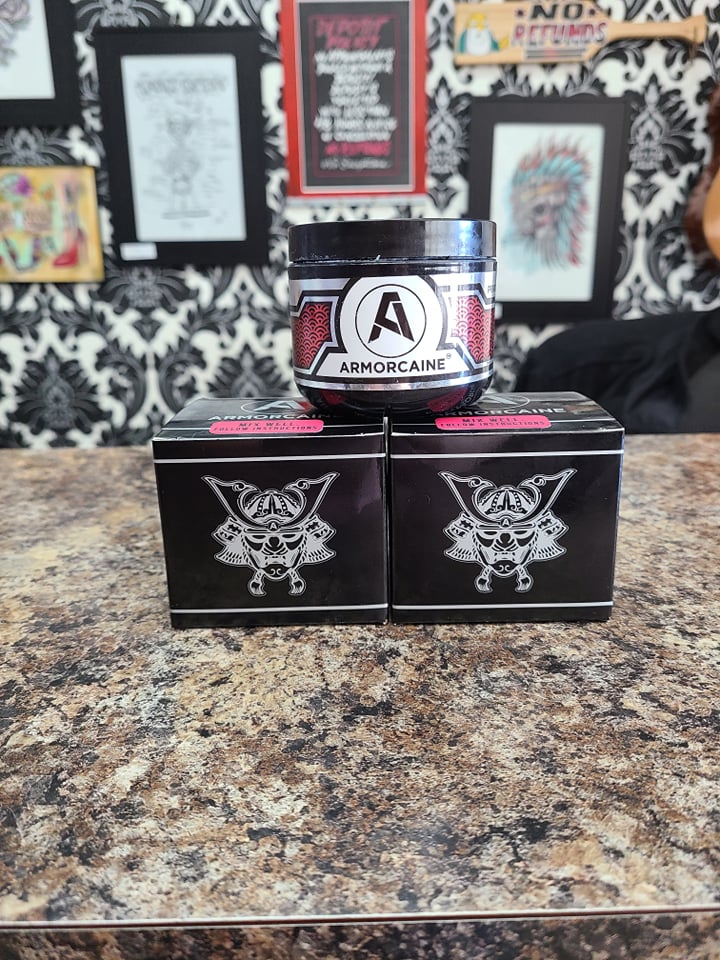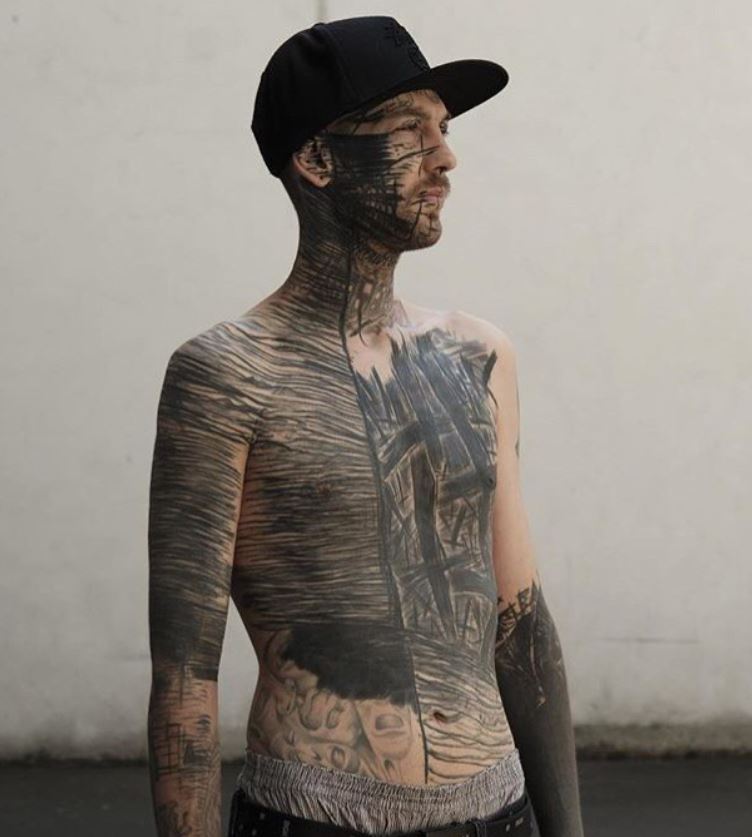Numbing Cream

There are lots of reasons that people choose to use numbing cream. It definitely has mixed reviews in the tattoo community but it is a great option for a lot of people, whether it’s your first tattoo, a particularly spicy area, or you just prefer less pain. Here is what numbing cream is actually doing, some different options, and some pros and cons.
Tattoos hurt for a number of reasons but there are things you can do to make it better, or worse. Eating before a tattoo, and staying hydrated can help keep the pain manageable. But things like your head space, chronic pain, stress levels, old injuries, and how well you slept can also impact how much pain you may feel in a tattoo. This is when numbing creams can come in handy.
There are 3 different types of popular numbing creams on the market right now, nerve blockers, nerve deadeners, and vasoconstrictors. These each attack the challenge of numbing through different channels.
Nerve blockers, like their name suggests, block the pain from being translated from the nerves to the brain. These creams generally use tetracaine or benzocaine, these allow your nerves to feel the pain but that stimulus gets blocked and doesn’t translate to pain. It’s notable that these are not the most effective at numbing, often they dull out some of the pain but you still feel some of the sensation.
One of the most popular numbing creams are the nerve deadeners. These typically use chemicals like lidocaine to deaden your nerves. Lidocaine is often used as a nerve deadener in dental procedures, so it has a long history of proven nerve deadening! Lidocaine also has its problems though. One issue with lidocaine is that it isn’t a long term deadener, you can expect reliable deadening for 1-2 hours before you start to feel some of the pain, so this one might be most effectively used for small scale tattoos in uncomfortable spots like your ditches.
The effectiveness of both these nerve affecting creams really depends on the company making them and the formula that they use. As you may know the tattoo needle punctures the skin and deposits the ink in the dermis of your skin (checkout tattoo ink and how it works for a more in depth explanation). The needle actually goes a few millimeters into your skin to achieve this and so your numbing cream needs to as well. There is a bit of unknowing in how long they last or how effective they will be to your skin because each company has a different formula, so if you’d like to try these out I’d recommend researching on brand rather than type to get more reliable information.
Another different type of numbing cream are vasoconstrictors. These are said to be the most effective, they use chemicals like epinephrine to constrict the blood vessels. By restricting the blood flow there is less swelling and bleeding at the site of the tattoo. With that, vasoconstrictors are the most dangerous numbing agents because blood vessel constriction can contribute to heart health issues, such as an abnormally fast heart rate, lower oxygen concentration in bodily tissues, or ischemia. Vasoconstrictors are still a great option, since they affect the vessels rather than nerves and take time to be absorbed they typically last the longest!
Though numbing creams are generally safe it’s important to follow the directions on the packaging. You can consult with a doctor if you have any concerns or pre-existing conditions.
Numbing creams can be a great option to make your next tattoo feel a little smoother. There is some controversy in the tattoo community about the use of them. Some tattooers say that certain numbing creams with a water base are too slippery when it comes to tattooing over the area, others have tried numbing creams and don’t think they work too well anyways so they choose not to use them. A few old school artists think that pain is a part of the process and the experience so they frown on them a bit. I think the most relevant downsides are that they have a time limit. If you use numbing cream that’s typically going to last 1-2 hours and go into a 3 hour tattoo you may not be able to finish. If you’re still getting tattooed once that numbing wears off, all the pent up shock from the pain you didn’t feel will catch up to you and can make the rest of the tattoo even more painful or cause you to have to stop and finish in another session. My personal fear, because I want to be fairly covered in tattoos, is that once I use numbing cream I’ll get too used to it and I won’t be able to get tattooed without it. That’s not how I want my tattoo journey to look, so it’s not right for me, although I may use it for some spicy spots like my knee! It really is personal preference, tattoos are definitely manageable without numbing.
If you are going to use numbing cream consult with your tattoo artist beforehand. They may be able to strategize your use of it to get the most time out of it and your session, as well they could point you in the direction of their personal favourite. They may even carry some, buying it through them supports your local tattooer!
Speaking of, we recently started carrying Armourcaine numbing cream made by Armorclad labs which you can purchase by the session or the whole jar to take home for yourself. This brand does have specific instructions that take extra care so be sure to ask about it before the day of your appointment so we can get you in early to use the cream to its full effect.







































































